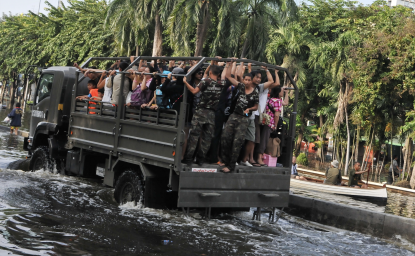Enduring Responses to War and Disaster: The Environmental Dimensions of Sustained Recovery

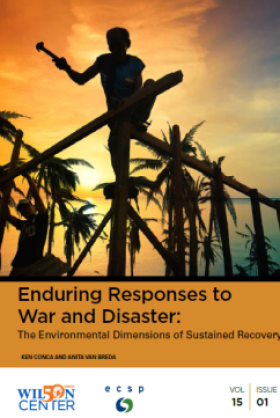
Recognizing the need to address environmental challenges in the wake of war and disaster, American University’s School of International Service and World Wildlife Fund (WWF) joined together to launch the project “Environmental Dimensions of Sustainable Recovery: Learning from Post-Conflict and Disaster Response Experience.” As representatives of a leading conservation NGO (World Wildlife Fund) and a professional graduate school with extensive expertise in environment, development, and conflict resolution (American University’s School of International Service), Anita van Breda and Ken Conca’s partnership helped to conduct a truly cross-organizational, cross-perspective exchange and familiarized them with the challenges and opportunities that occur when working across sectors and organizational cultures.
The project brought together individuals from diverse organizations—in conservation, disaster response, and conflict transformation—with relevant forms of experience on the environmental dimensions of relief, recovery, and development. “Enduring Responses to War and Disaster” summarizes lessons learned from a dialogue among lead organizations working at the intersection of post-conflict/post-disaster recovery, environmental sustainability and natural resource management, and conflict transformation.
What prompted the “Environmental Dimensions of Sustainable Recovery” project? Did the process of bringing such diverse organizations to the table prompt any unanticipated outcomes?
Anita van Breda: We initiated the project based on our shared environmental interests, and our different experiences—mine integrating environmental issues into the disaster recovery and reconstruction and Conca’s expertise in natural resource management and conflict. We were inspired to gather experiences from around the world and from different institutional perspectives to examine commonalities and differences, and look for ways to improve understanding and collaboration, as well as environment, disaster, and conflict practices.
Ken Conca: We wanted to convene a conversation among different kinds of organizations with experience in post-conflict or post-disaster settings, so that people doing humanitarian work, environmental work, and conflict-transformation work could share knowledge derived from their different kinds of experience.
How does the lack of environmental considerations in post-conflict and post-disaster response hinder sustainable development?
AVB: There are few healthy, productive, and secure communities existing in destroyed and degraded environments. The environment as an environmental asset plays a role in all aspects of human well-being. Degrading and/or destroying the environment in a post-disaster response often leads to another disaster, further setting back a community’s ability to achieve development of any kind.
KC: It’s often the case that problems related to environmental damage or unsustainable natural-resource extraction are components of the conflict, either directly or in the background. Peace affords opportunities to address those grievances by promoting more sustainable forms of development. Environmental collaboration can also be a key part of reconciliation efforts, and it can help soften the perceptions of self and other that enable violence. But if the issues aren’t addressed, then of course the risk of conflict resurgence is greater.
What are the main barriers to the inclusion of environmental consideration in development and humanitarian assistance projects?
AVB: I can speak to humanitarian action—a lack of institutional leadership, lack of accountability, and insufficient creative training and mentoring.
KC: We’ve also found that it is difficult to keep environmental issues on the radar. Too often, international aid responses are artificially segmented into “relief,” “recovery,” and “development” with very little continuity across them. Tim Kovach and I did a study of the “environmental attention cycle” across several cases as they moved from post-conflict needs assessment, to recovery planning, to the mobilization of donor funding. We found a clear pattern in which environmental issues tended to fall off the radar over time. This was particularly a problem in rural areas, and particularly for issues related to forests, soils, coastal fisheries, and other foundations of sustainable livelihoods.
What steps can we take now to increase the exchange of knowledge across the disaster response, environment, and conflict transformation sectors?
KC: Training is a key piece of the puzzle. We found very little overlap among the trainings and toolkits that are used for environmental impact assessments and for conflict-sensitive programming, for example. Perfect toolkits are never going to be the answer, but the segmented character of the training reflects the segmented character of the thinking. In our graduate program, we’re trying to train folks who can work at the intersection.
The report mentions an increasing consideration of environmental factors in development agency and intergovernmental organization frameworks. Have we seen progress and can you share any successful examples of implementation?
AVB: Yes, we have seen progress. I no longer get blank stares from disaster professionals when they see my business card, instead I am getting calls from various humanitarian agencies interested in mainstreaming environmental issues in their policies and practices (although sometimes I have to explain that climate and the environment are not the same thing). A great example of progress is the Red Cross Red Crescent Movement Green Response program in operation and making progress.
KC: I started working on post-conflict environmental peacebuiliding twenty year ago. At that time, it was indeed mostly blank stares! Today, there is a large community of practice around the concept, and a growing body of research.
Enduring Responses to War a... by The Wilson Center on Scribd
Enduring Responses to War a... by The Wilson Center on Scribd
Authors
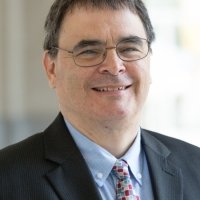

Environmental Change and Security Program
The Environmental Change and Security Program (ECSP) explores the connections between environmental change, health, and population dynamics and their links to conflict, human insecurity, and foreign policy. Read more

Explore More
Browse Insights & Analysis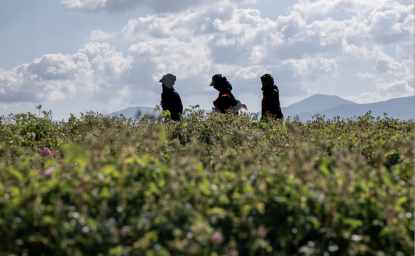
Can Climate-Resilient Agriculture Become an Engine for Syria’s Post-Conflict Recovery?
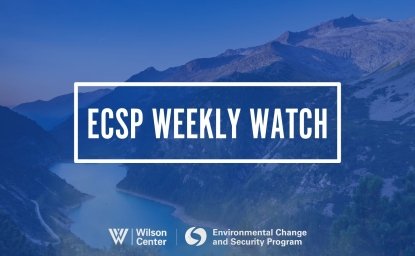
ECSP Weekly Watch | March 3 – 7
